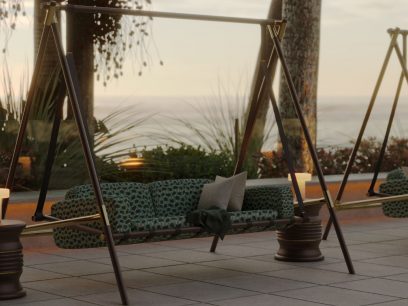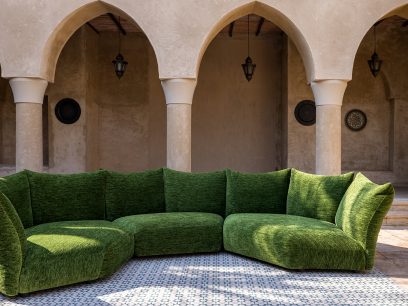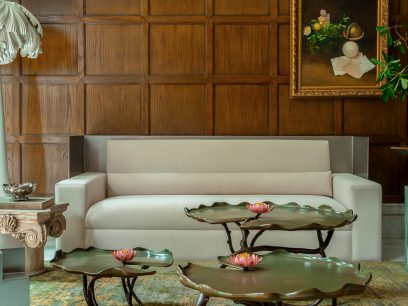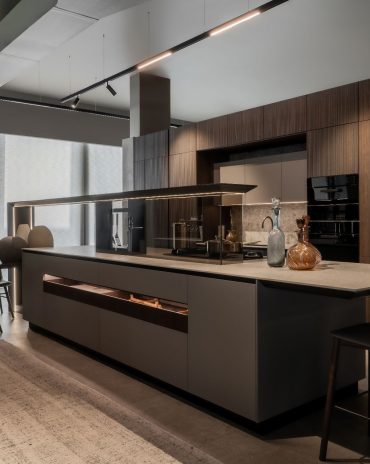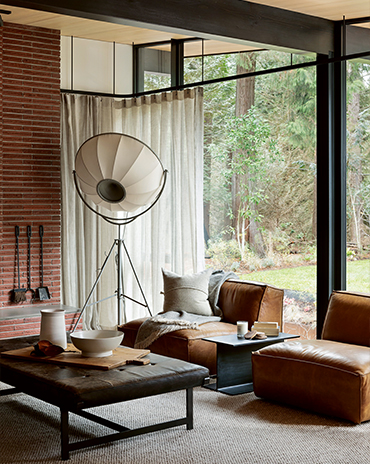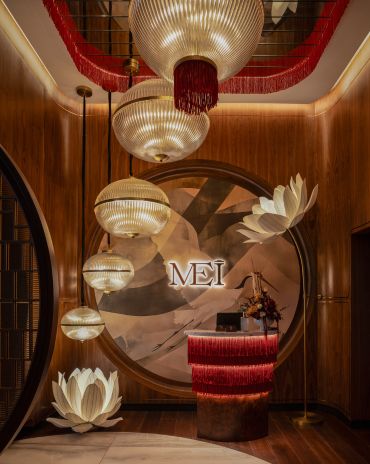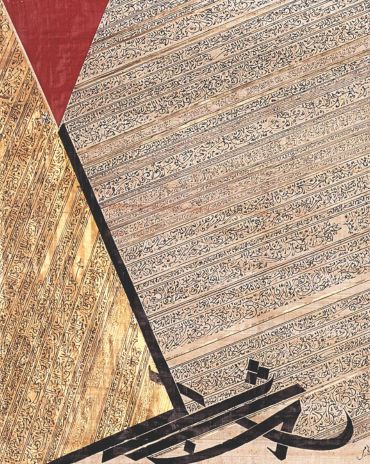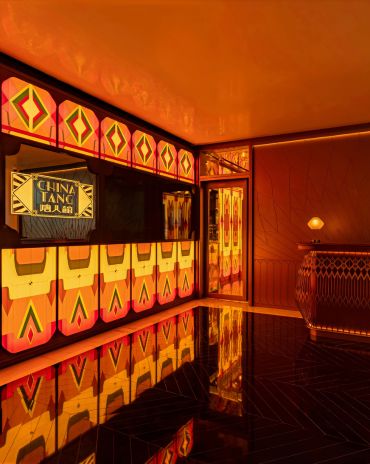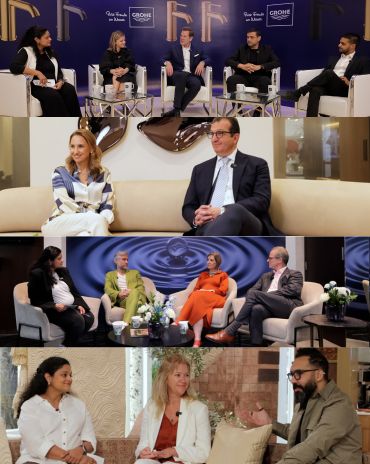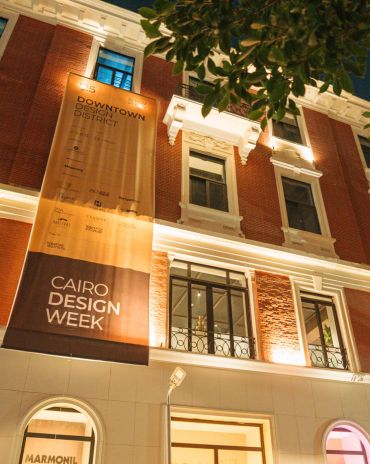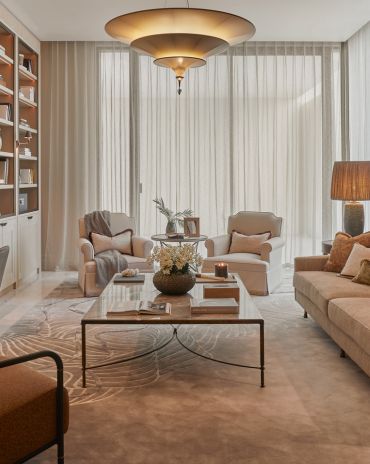Copyright © 2025 Motivate Media Group. All rights reserved.
White Paper by Roar reveals the future of restaurant design post Covid-19
The research reveals what we may expect of the future of dining
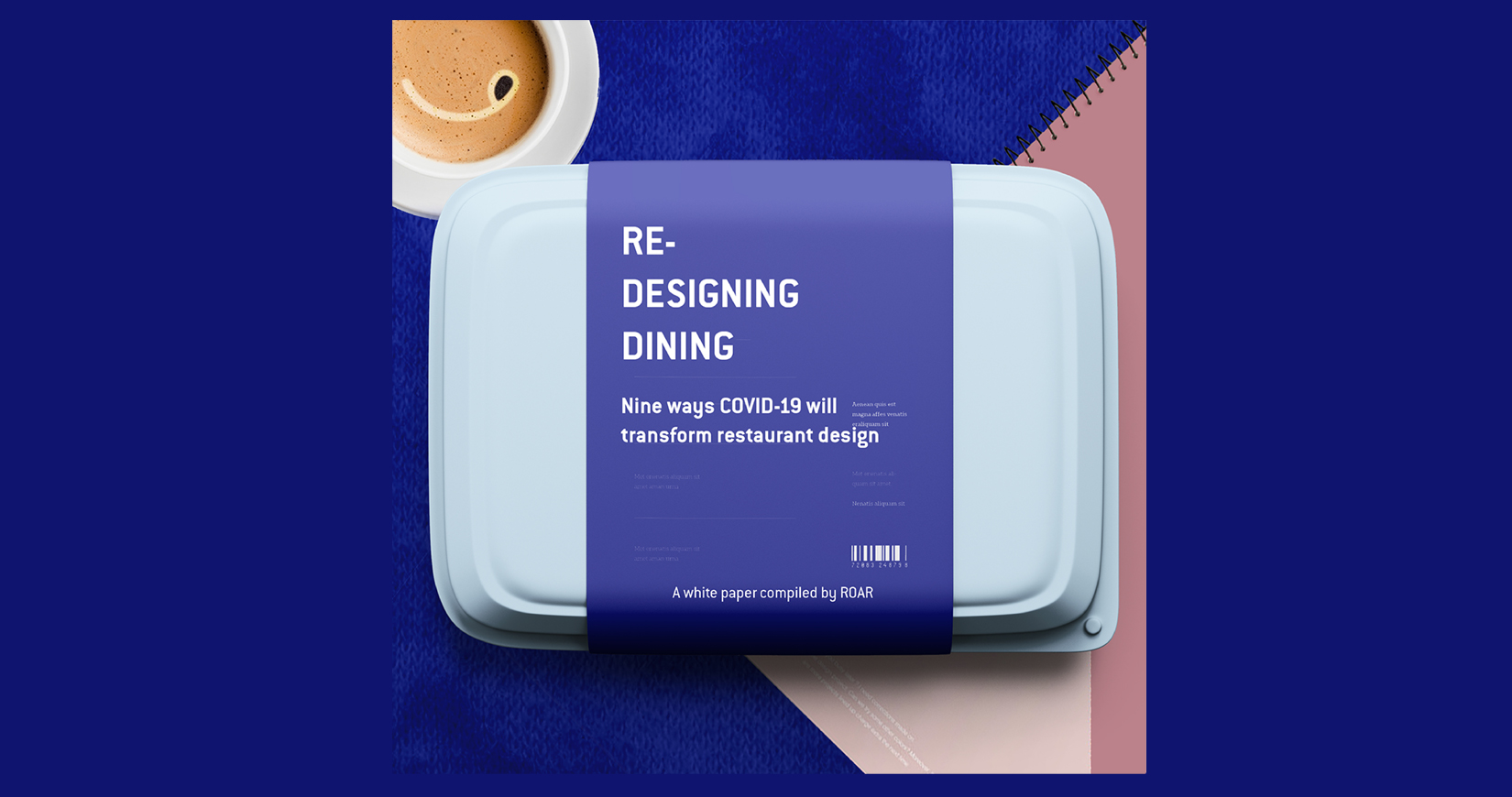
A White Paper by Roar reveals results on the future of restaurant design and dining in a post Covid world.
According to the report, restaurant designers will abandon social distancing and return to pre-pandemic spacing – but not until 2021.
A survey of 170 industrial professionals revealed that only a quarter (26%) think a return to normal spacing will happen before the end of this year. Most (64%) expect that to happen next year, while a small minority (5%) say the restaurant trade will never return to normal.
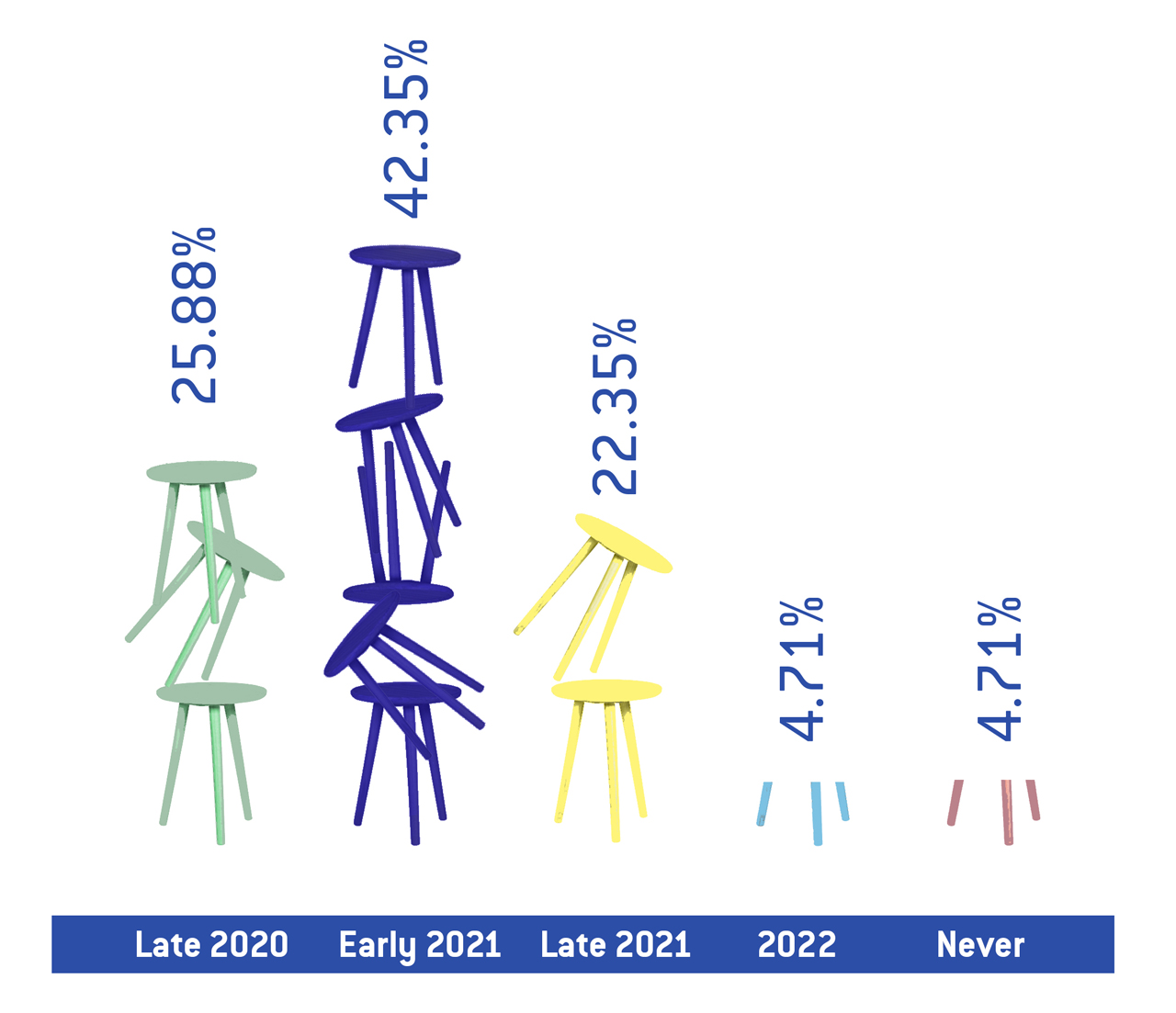
“Safe spacing will be the most dramatic impact on restaurants – but according to our experts, one that is likely to be short-lived,” says Pallavi Dean, founder and creative director of Roar, the company that compiled the White Paper.
The White Paper noted that the guidelines in the IBC (International Building Codes) for F&B specify an average 15 sq ft per seated diner, and 5 sq ft for customers standing in so-called ‘vertical drinking’. Current World Health Organisation guidelines call for 27 sq ft per diner in F&B outlets.
‘Layout & spacing’ was the first of the Big 3 issues highlighted in the White Paper. The next two were ‘contactless’ and ‘buffet/sharing food concepts’.
“Very few people expect dining to be fully contactless. far more likely is what we’re calling ‘contact-light’,” Dean explained.
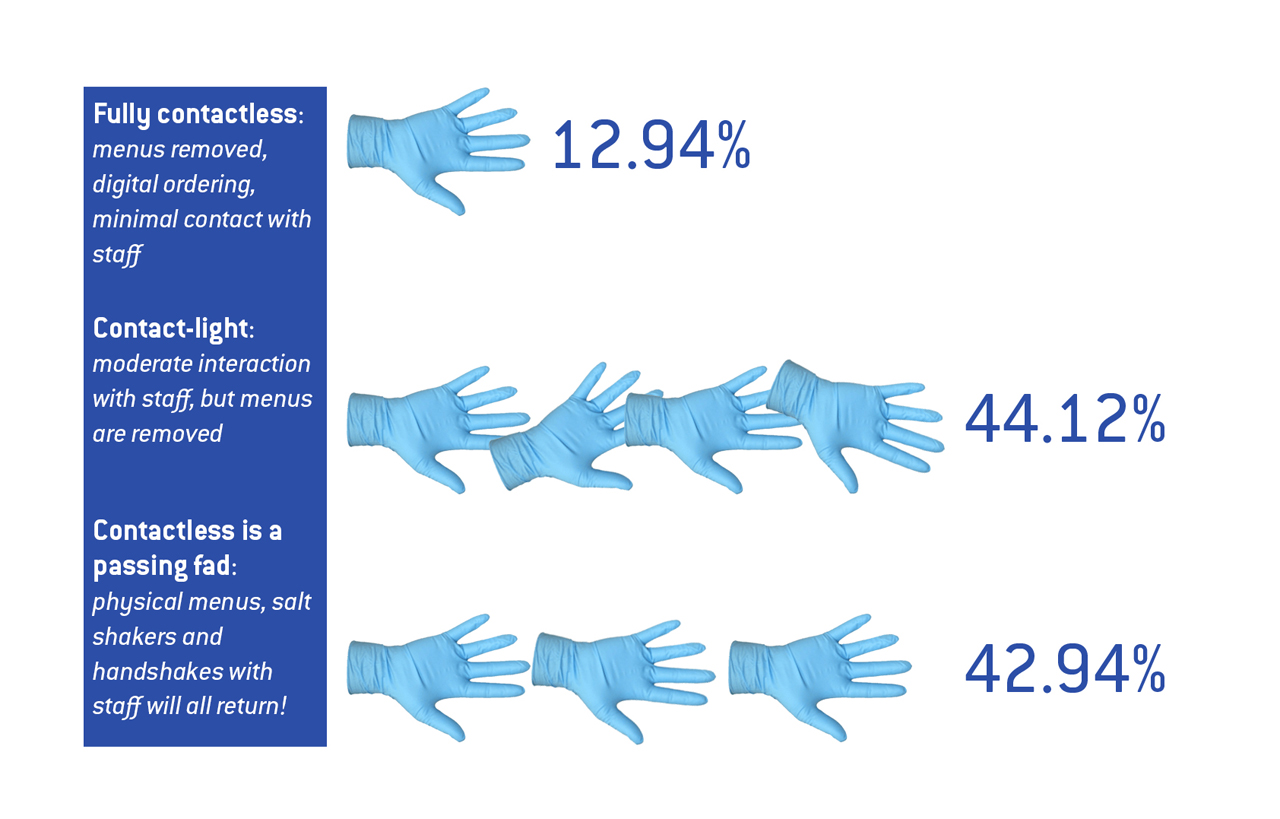
According to the White Paper, the contactless trend will have multiple impacts –some relating to objects while others to people. Physical menus may become rare, if not extinct. The same may be true of communal salt & pepper shakers, and the grubby three-week-old bottle of ketchup in the middle of the table. Sharing mezze with close family members will likely endure – but sharing platters at a large corporate functions may not.
The prosaic, administrative and functional aspects of the restaurant experience must also be reimagined, says the White Paper. Restrooms in particularly must be completely re-planned, with every unnecessary touchpoint removed: doors, soap, water and drying etc.
However, people are a different matter. “Since the dawn of restaurants, a charismatic maitre d’, waiter, chef, barman or patron has been the lifeblood of a good restaurant – nowhere more than in the Middle East, where I grew up,“ Dean said.
The White Paper concluded that this physical familiarity will ultimately endure, though maybe not before a vaccine for COVID-19.
You can read the full White Paper here.
The Latest
Studio 971 Relaunches Its Sheikh Zayed Showroom
The showroom reopens as a refined, contemporary destination celebrating Italian craftsmanship, innovation, and timeless design.
Making Space
This book reclaims the narrative of women in interior design
How Eywa’s design execution is both challenging and exceptional
Mihir Sanganee, Chief Strategy Officer and Co-Founder at Designsmith shares the journey behind shaping the interior fitout of this regenerative design project
Design Take: MEI by 4SPACE
Where heritage meets modern design.
The Choreographer of Letters
Taking place at the Bassam Freiha Art Foundation until 25 January 2026, this landmark exhibition features Nja Mahdaoui, one of the most influential figures in Arab modern art
A Home Away from Home
This home, designed by Blush International at the Atlantis The Royal Residences, perfectly balances practicality and beauty
Design Take: China Tang Dubai
Heritage aesthetics redefined through scale, texture, and vision.
Dubai Design Week: A Retrospective
The identity team were actively involved in Dubai Design Week and Downtown Design, capturing collaborations and taking part in key dialogues with the industry. Here’s an overview.
Highlights of Cairo Design Week 2025
Art, architecture, and culture shaped up this year's Cairo Design Week.
A Modern Haven
Sophie Paterson Interiors brings a refined, contemporary sensibility to a family home in Oman, blending soft luxury with subtle nods to local heritage
Past Reveals Future
Maison&Objet Paris returns from 15 to 19 January 2026 under the banner of excellence and savoir-faire
Sensory Design
Designed by Wangan Studio, this avant-garde space, dedicated to care, feels like a contemporary art gallery

